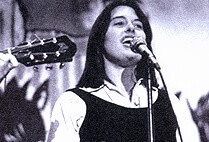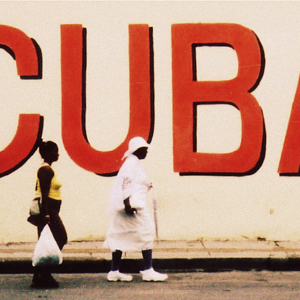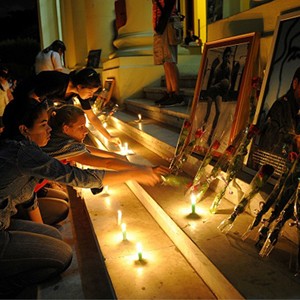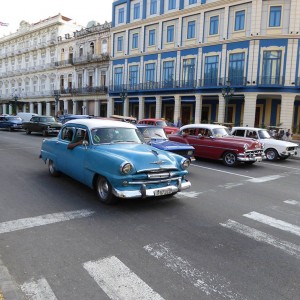A Look at Cuba from the Ivory Tower?
As a Cuban American who came to this country legally on an immigrant visa, I am offended by Susan Eckstein’s trivialization of the Cuban plight as mere political gain on the part of the Democrats (“Holding the Door for Cubans,” Fall 2015). Perhaps Eckstein should read the book The Fourth Floor (1962), a reference to the fourth floor of the executive building in Washington, D.C., where decisions on Cuba were being made. The book shows how the United States exploited the Cuban Revolution, selling arms to both sides. What the US intelligence failed to capture was the communist leanings of Fidel Castro and Che Guevara. The Cuban Americans here in the United States will also not let the United States forget the betrayal by the US government during the Bay of Pigs invasion. The United States reneged on the promise to provide air support to the Cuban exiles who went back to Cuba to attempt to overthrow the Castro regime. Despite this betrayal, I am grateful to the United States for the opportunity to live here. We forgive, but we don’t forget.
I grew up in Cuba during the transition from the Batista government to the Castro regime. Children my age, nine years old at the time, were being sent to Russia to become indoctrinated into Communism. The Cuban government took over telenovelas, where the plots of the stories were brainwashing the children to report any counterrevolutionary activity of their parents to the G-2 Office, an office designed to spy on the Cuban populace. That’s what prompted my parents to leave Cuba. What happened in Cuba at the time was the equivalent of having ISIS 90 miles away.
If this article depicting an ivory-tower interpretation of the events in Cuba was supposed to impress me regarding the scholarship coming out of BU so that I can open my wallet to donate, it failed miserably. The best part of the article was the picture of the rafters attempting to flee Cuba, despite the danger of drowning, as happened to Elian Gonzalez’ mother, who was trying to save him from political repression. The picture reminded me of the legend behind the Virgin of Charity, the patron saint of Cuba, who appeared to three fishermen lost at sea and guided them back to the Cuban shore to safety. Little did we know that this legend was going to transform into the Virgin’s guidance of the Cuban community fleeing political oppression while coming to US shores on these rafts.
Fernando J. Gutierrez (SED’81)
Pasadena, Calif.
P.S. I am a Democrat.
Fond Memories of Old Ironsides
I was very impressed by your article (“Constitutional Amendments,” Fall 2015) on the preservation of the USS Constitution, which I visited as a child and young adult while living in Newton, Mass. I am wondering how common white oak trees were in Massachusetts during the time it was built. Now it seems we have to bring them in from Indiana—I don’t think that was an option then. Thanks for your great articles.
Wendy Sherman (SED’71)
Jupiter, Fla.
Letter Prompts Response
Regarding the letter from Bill Daviero (SED’73) (Letters, Fall 2015), in particular its last two paragraphs, ending with “These are not century-old patterns of prejudice.” It may help if he would mull over “The Case for Reparations,” an article by Ta-Nehisi Coates in the June 2014 Atlantic. It may expand his knowledge of the “prejudicial” and “cultural victimization” that has lingered in the United States beyond slavery.
Oswald Thompson (SDM’76)
Fort Washington, Md.
















































Fernando Gutierrez (SED’81) wrote a letter criticizing a description of my work reported in Bostonia: a historical study of US Cuban immigration policy. I am sensitive to the experience Gutierrez, his family, and others had in Cuba before coming to the US, although Gutierrez claims I trivialize Cubans’ plight as mere political gain on the part of the Democrats. In point of fact, he trivializes as well as misrepresents my work. My book project, written with the support of a highly prestigious John Simon Guggenheim Memorial Foundation Fellowship, focuses on immigration policy from the vantage point of the U.S. It focuses on Cuba and Cubans’ reasons for uprooting only in so far as they are relevant to understanding Washington policy. My book-in-process highlights exceptional entitlements the U.S. has extended to Cubans, and only to Cubans. Cubans are the only foreign-born who near-automatically become legal permanent residents when entering the U.S. without authorization, and who qualify for refugee benefits without having to prove that they meet the near-universally agreed upon definition of refugees, namely demonstration of well-founded evidence that they would suffer persecution if they remained in their homeland. Moreover, Cubans who appear at the U.S. border are paroled into the country and put on a path to legal permanent residence and citizenship while Central American children arriving at our border, fleeing for their lives violence in their homeland, are deported. And Cubans in the post Soviet era receive refugee benefits even though they emigrate for economic more than political reasons. They also are the only immigrants, legal or illegal, who qualify for welfare benefits. Both Republican and Democratic Administration have extended such privileges to Cubans. Gutierrez incorrectly misrepresents me in saying that Democrats exploit Cubans’ plight for political gain. Overall, the Republicans have been the main beneficiaries of Cuban immigration in that until very recently most Cuban immigrants voted for the Grand Old Party.
Gutierrez’ family came to America to enjoy political freedom. He should respect the dedication of a serious scholar, whether or not he agrees, or likes, the documentation the scholar reveals. Gutierrez should not hold it against Boston University that it employs me. The University is committed to intellectual diversity and to scholarship. Out of respect for freedom and truth, Gutierrez should consider contributing to his alma mater, not pronounce his wallet closed out of distaste for my project. We are in America, not Cuba!